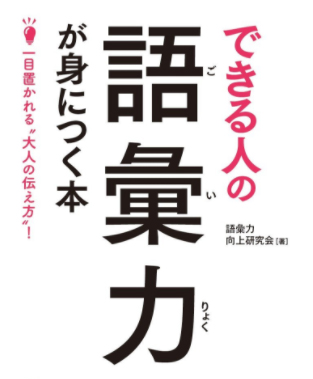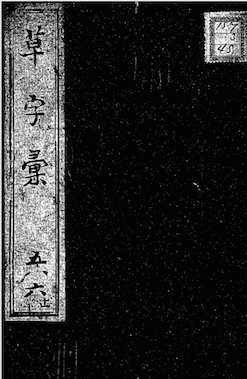58. The "Katakana Yo" Radical: 彐, ヨ, ⺕, and 彑
With just three strokes, the "katakana yo" radical 彐 looks as simple as could be. But it has quite a few tricks up its sleeve! All sorts of issues arise in regard to its variant shapes, its names, the etymology of kanji containing this radical, and more!
What Are the Shapes of the "Katakana Yo" Radical?
Here are the four shapes of the "katakana yo" radical:
- main shape: 彐
- 1st variant of the radical: ヨ
- 2nd variant of the radical: ⺕
- 3rd variant of the radical: 彑
All have three strokes.
What Are the Names of the "Katakana Yo" Radical and Why?
Looking at the first three shapes, one can easily see why English speakers have named this radical after ヨ, which is the katakana representation of the yo sound. But two other English names for the radical are "pig's head" and "snout"! Those have to do with these non-Joyo characters:
彐 (カイ or ケイ: pig's head)
彑 (ケイ: pig's head)
The definition I've provided for 彑 comes from Nelson and matches the alternative English names for the radical. Nelson doesn't have an entry for the autonomous kanji 彐. However, Kanjigen says that the stand-alone kanji 彑 is the variant of the autonomous kanji 彐, so I've given them the same definitions. (Kanjigen also says that each character depicts an "animal’s head," not specifically a "pig's head," but I'm ignoring that information here!)
Although 彑 has been demoted to the fourth of four possible shapes (at least as Nelson has it) for this radical, 彑 was actually its original form. Thus, that kanji inspired not only the English names we've seen for radical 58 but also all these Japanese names:
けい
けいがしら
いのこがしら
The けい clearly comes from the ケイ readings of the 彐 and 彑 characters.
The がしら in the last two names is a voiced version of かしら, a radical position name. When a kanji divides neatly into top and bottom, the top is called either かんむり (冠: crown) or かしら (頭: head).
As for いのこ, that's the way to read the non-Joyo 豕 (pig).
Joy o' Kanji primarily calls the radical "katakana yo" and けい.
The Evolution of This Radical
Japanese Wikipedia explains that all the following kanji once contained a 彑 shape:
書 (142: writing)
事 (293: thing)
健 (474: health)
争 (529: to contend)
The 彑 in these characters then changed to ⺕.
There's just one kanji in which that transformation never occurred:
彙 (1958: collection)
Curiouser and Curiouser
Joy o' Kanji recognizes a sole Joyo kanji as having radical 58 on duty. I'm talking about 彙!
Nelson presents one other Joyo kanji as containing the on-duty "katakana yo" radical:
当 (183: hitting)
However, Kanjigen and Joy o' Kanji interpret this kanji as having the on-duty 小 radical (42: "little").
From that latter perspective, the main form of the "katakana yo" radical (彐) isn't on duty in any Joyo kanji! Only the variant form 彑 is! Thus, when we're talking about 彙, the term "katakana yo" doesn't even seem relevant (but sounds a lot better than "pig's head" or "snout"!), as the ヨ shape is usually nowhere to be seen.


Note that I said "usually" in the last sentence. Get this: 彙 can appear with ヨ in place of 彑. Compare these book covers. On the left we find 彙 in a recognizable shape. On the right we have 彚. This variant form of kanji 1958 has ヨ on top.
The first work features that kanji in 語彙力 (ごいりょく: (the extent of) one’s vocabulary). The other book is a 字彙 (じい: character dictionary). Find out more about both titles in essay 1958 on 彙.
A Hand or a Pig's Head?
I've been puzzled about something. For ages, thanks to Henshall and others, I've thought of the ⺕ component in this character as representing a "hand":
書 (142: writing)
Henshall says that the part above 日 symbolizes a "hand holding a brush."
The right side of the next kanji again means "hand holding brush," he says:
建 (473: to build)
Same goes for this look-alike, as it contains 建:
健 (474: health)
He also locates a hand in these kanji:
事 (293: thing)
争 (529: to contend)
However, the next kanji, which Nelson associates strongly with our radical, does not etymologically contain a hand:
当 (183: hitting)
Henshall says that this character used to have a very different shape, one in which there was no trace of a ヨ.
So what's going on with all the kanji that do contain "hands," according to Henshall? Why does he say that when Wikipedia associates ⺕ with radical 58?
One site provides an answer, explaining that people treat ⺕ as a variant of radical 58 because ⺕ closely resembles ⼹. However, says that source, ⺕ has its own etymology and meaning. Whereas ⼹, ヨ, and 彑 mean “boar’s head,” ⺕ means “hand." That's quite a difference!
I also wondered about these two kanji, which contain the ヨ shape:
帰 (96: return)
雪 (157: snow)
In the past, says Henshall, both characters included a ⺕ shape, not a ヨ. In each case, the ⺕ meant "hand."
Photo Credit: Eve Kushner
In this photo of a pickle (漬け物 or 漬物, つけもの) shop in the Osu section of Nagoya, 雪 (snow) appears not with a ヨ shape but rather with a ⺕. However, check out this picture from the same shop:
Photo Credit: Eve Kushner
Now 雪 looks as it "should"! By the way, 雪 is just part of the shop name, which is 阿己雪漬物店 (あわゆきつけものてん), in which 阿 is non-Joyo.
